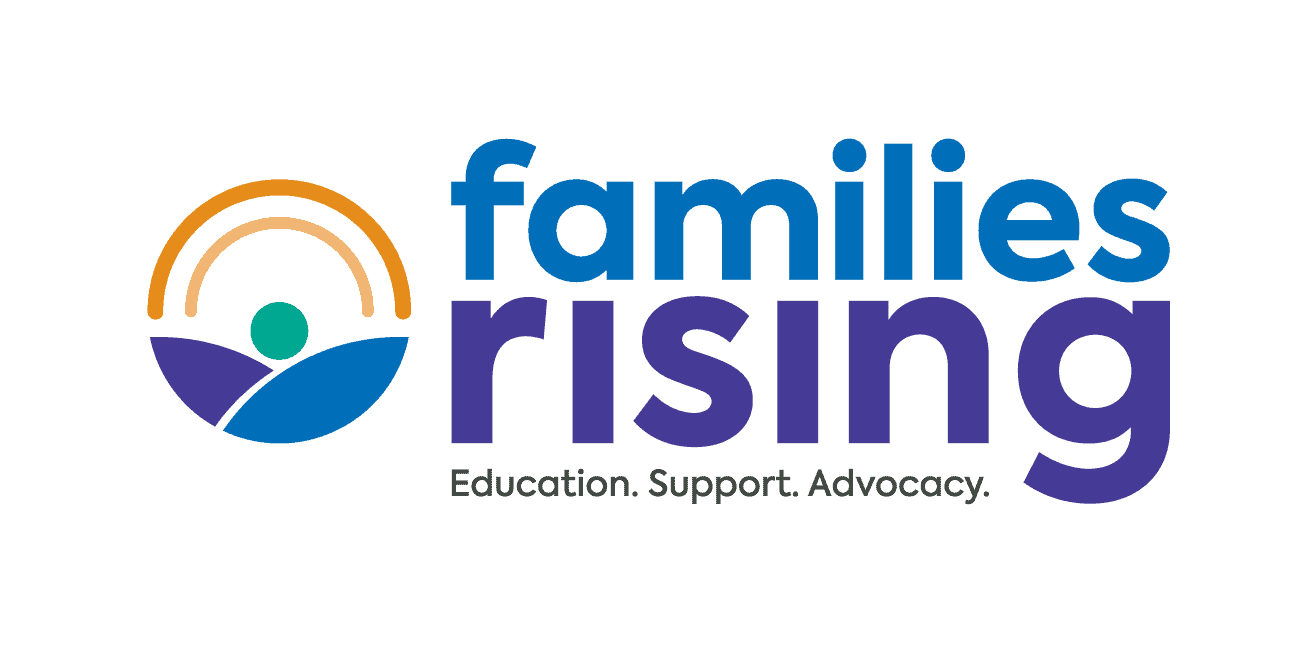From Adoptalk 2018, Issue 3; Adoptalk is a benefit of NACAC membership
Adapted by Anna Libertin, NACAC’s communications specialist, from a webinar by Sue Badeau
Sue Badeau is a birth and adoptive parent to 22 children and a national child welfare trainer and consultant with more than 30 years of experience in the field. Her book, Are We There Yet: The Ultimate Road Trip, Adoption and Raising 22 Kids, helps parents, people involved with foster care or adoption, social workers, teachers, and more understand the life inside a very real family. Sue presented “Helping Children Manage Feelings and Behaviors,” a webinar for NACAC that included the tips below. Discover more webinars by experts in the field here.
Everyone struggles to manage their emotions sometimes: in our most stressful moments, we let our feelings take over and fail to embody the best version of ourselves. For children who have experienced trauma, abuse, and neglect, managing feelings and behaviors can be an even bigger challenge. Lying, stealing, raging, cursing, hoarding, harming oneself or others, acting out sexually, destroying property, and other tough behaviors are often survival skills that children have used to cope with past trauma.
It’s important to recognize the root of these challenging behaviors so we can begin to address them. When a child experiences trauma, they feel fear, confusion, worry, anger, and a sense of being out of control. The smells, sounds, images, and feelings associated with these traumatic memories can later trigger these emotions, even if a child is now safe. As a result, the responses of children in your care might not seem to match the situation or setting they’re in. For example, a child who has lost members of his birth family in a drive-by shooting might begin acting out every time he enters the school cafeteria because the loud sounds place him back in those harrowing moments. A teen’s mood might shift suddenly when you’re baking a pie because the smell reminds her of her birth parents’ biggest fight, which took place at Thanksgiving.
Being able to appropriately match one’s thoughts, feelings, and behaviors to events is called affect regulation. While children who experience trauma might not be able to manage their emotions and behaviors right away, following the steps below can help them re-learn or further develop their affect regulation.
In the Moment
At the height of a triggering situation, a parent’s main goal should be to help their child become calm. Whether scared, sad, mad, or confused, at their core a child is feeling out of control and unsafe. As a result, their bodies are hyperalert. Focus first on getting the child to slow down—work on helping the child pause before they take action. There are many ways to do this, including practicing controlled breathing, chewing gum, or listening to their favorite song.
When a child is triggered, they’re not only remembering a traumatic event—they’re physiologically reliving it. Help them find ways to be present in the current moment and distance their physical selves from this memory by having them clap their hands, spin around, or hold an ice cube. Ask them to focus on the way they feel in their body and draw attention towards specific senses: “Do you hear the buzz of the air conditioning?”, “Do you smell the wood of the chair you’re in?”, “Do you feel the threads of the carpet on your toes?”
Once the child is physically calm, help them to feel comfortable and safe again. Then, create a plan. Find two or three things the child can do to relax or create two or three things they can say to themselves that can help them calm down. If you find the child struggles with triggered outbursts frequently, put these ideas on a little card or make a mnemonic device that might help them remember what they can do to calm down and who they can call for support. For example, remind the child to be “CALM”:
- Control the messages they tell themselves by looking for humor, acknowledging the struggle but setting it aside, considering the consequences of a negative action, or learning to look at the situation from a different point of view.
- Assert themselves with respect for themselves and others instead of using anger or aggression which could escalate conflict.
- Lie back in a comfortable chair and breathe deeply or walk around to release the adrenaline.
- Make use of memory aids to help themselves stay calm—like a rubber band on the wrist that acts as a tangible symbol of their commitment and strategies to manage behaviors.
After an Incident
After an outburst or meltdown, it can be easy to wonder, “What is wrong with this child?” Remember that these reactions, which seem so out of the blue, are the result of significant past trauma. Instead of asking what’s wrong, ask, “What may have happened to this child that has caused this behavior?”
Be observant: Look closely at what is happening before, after, and at the time of a meltdown or challenging behavior. Identify patterns of sound, sights, and smells so you can determine what might trigger these responses and be more prepared for next time.
Once the child is calm and the incident has passed, sit down with the child and work on talking about what exactly they were feeling in the moment. Behaviors are a way for people to communicate emotion, so if the child can understand how they are feeling, they can find new ways to express themselves. Describe different emotions—including happy ones—and explain to the child that it is okay to feel mad, sad, scared, or confused. Ask them to think more deeply about their bodies. Asking questions such as “What do you think your body is trying to tell you when your face gets hot?” or “Why is it that right before your math test, you had a tummy ache?” can help the child connect their body’s reactions to their feelings and behaviors. You can also work with them to help them recognize their own triggers—while the child might not be able to explain why they get agitated when you make a certain meal, asking them if they know why this always seems to happen at a specific place can help them start to connect the dots. If they are unused to expressing emotions, the child might resist having this conversation. Don’t force the child to talk about their emotions if they’re feeling uncomfortable. Instead, deflect the attention by explaining how you might have felt in a similar situation or think of different ways for the child to express themselves, such as through art or music.
Forming Habits Over Time
Teaching a child to manage their emotions takes routine, persistent practice. Begin by working with the child to recognize and interpret other people’s emotions. Children who have experienced trauma don’t just struggle with understanding their own feelings—they often have a tough time reading others, too. Accustomed to living life in a hyperalert state, one flash of anger on someone’s face could be read as a threat, no matter how calm that other person might be. Additionally, understanding the other people’s emotions can help the child model and identify their own feelings through body language and facial expression. Use puppets, play “feelings” charades, or watch TV with the sound off to help the child guess how someone might be feeling based on their cues.
Then, think ahead. Once you recognize the situations that trigger the child, you can plan for the next time the child might be in that environment: work with the child to identify exactly what behavior needs altering and explain why the child might want to change their behavior. Then, practice how to change the behavior, so that when they enter into the situation, they feel empowered to choose how to behave. One way to work through this problem-solving process is the SODAS method:
- Situation—Think about what goes on that gets the child in trouble. In other words, identify the issue. Be clear and concise when discussing it with the child.
- Options—Think about what the child’s options are in that moment. Generate several ideas, even a few that are silly.
- Disadvantages—Think about what the disadvantages are for each option.
- Advantages—Think about what the advantages are for each option.
- Solution—Work with your child to determine which option is best and what the child could do next time.
You can practice the SODAS method with books or TV shows, pausing at the point of conflict to think about a character’s situation and options and letting the child decide what the solution could be. Once this groundwork has been done, you can implement clear, consistent rewards and consequences to help turn these positive behaviors into habits. Knowing what to expect can help children make informed decisions and feel safe: use specific detail when asking the child to do something, and be sure the child knows why they’re receiving a reward or consequence and what that reward or consequence might be.
Work to “catch” the child being good and try to give effective praise. Instead of simply saying “Good job!” or offering praise that might be insincere, be specific— “You remembered to do this without being told. That’s amazing. I’m proud of you.” Practice chaining, where you give clear instructions that include all the basic information and provide positive reinforcements for the successful completion of each “link” in the “chain.” Eventually, as a child becomes familiar with their environment and their tasks, you can wean them off of these praises and prizes so that they are only rewarded after much more significant achievements, like receiving positive reinforcement after completing a task rather than receiving it after completing every step along the way.
Above all, remember that feelings, thoughts, and behaviors are linked to each other and deeply affected by trauma. Children who experience trauma are resilient survivors—their behaviors reflect this and often helped them in the past. But teaching a child to manage behaviors in triggering moments can help them feel empowered and in control of their current life. In all of the above suggestions, predictability and structure is key: learning how to turn behaviors into habits requires a sense of safety and readiness that can be present when expectations are communicated clearly, calmly, and consistently.


